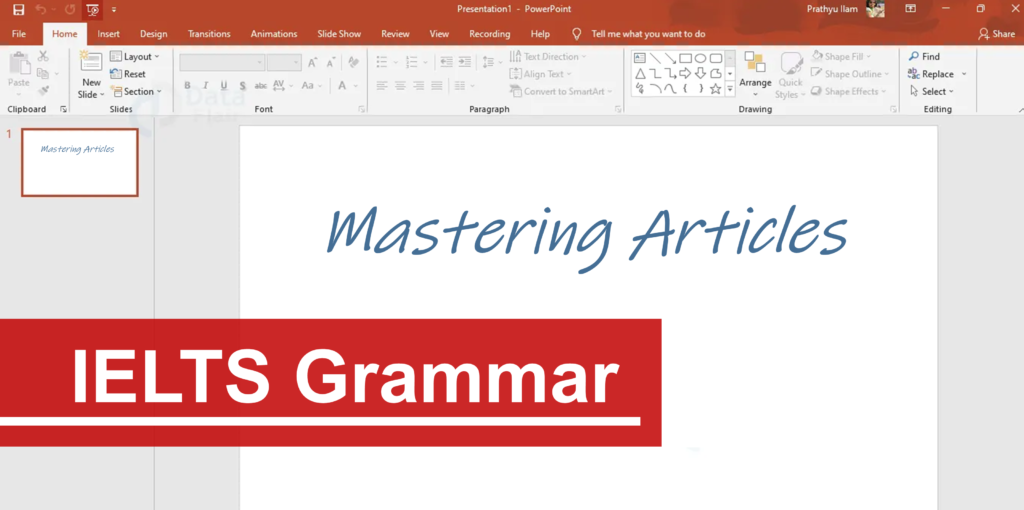Present Perfect vs. Past Simple: A Crucial Distinction for the IELTS Exam

Mastering the usage of the present perfect and past simple tenses is of paramount importance when preparing for the IELTS (International English Language Testing System) exam. The IELTS evaluates a test taker’s proficiency in the English language, and one key aspect of this evaluation is the ability to use English verb tenses accurately and effectively. The present perfect and past simple tenses are frequently tested on the IELTS exam, and understanding when and how to use them can significantly enhance your performance. In this lesson, we will explore the critical distinctions between these tenses and offer insights into when they are used in the context of the IELTS exam.
Present Perfect Tense
The present perfect tense is used to connect the past with the present. It is formed using the auxiliary verb “have” (in its various forms: have, has) and the past participle of the main verb. The structure is as follows:
Affirmative: Subject + has/have + past participle
Negative: Subject + has/have + not + past participle
Interrogative: Have/Has + subject + past participle
Usage of Present Perfect
- Unspecified Time: The present perfect is used when the exact time of an action is not specified or is not important. For example, “I have visited New York” indicates that you have visited New York at some point in your life, but it doesn’t specify when.
- Experience: Use the present perfect when talking about your life experiences or what you have done in your lifetime. For instance, “I have traveled to five different countries.”
- Recent Actions: It is also used to describe recent actions or events that have an impact on the present. For example, “I have just finished my work.”
- Continuing Actions: You can use the present perfect to express actions that started in the past and continue into the present. For example, “She has lived in London for 10 years.”
Past Simple Tense
The past simple tense, on the other hand, is used to describe actions that occurred at a specific point in the past. It is formed by adding the simple past form of the verb to the subject. The structure is as follows:
Affirmative: Subject + simple past form of the verb
Negative: Subject + did not (didn’t) + base form of the verb
Interrogative: Did + subject + base form of the verb
Usage of Past Simple
- Specific Time: The past simple is used when you want to specify the exact time an action happened in the past. For example, “I visited New York last summer” indicates a specific point in time.
- Sequenced Events: It is used to describe a sequence of events in the past. “First, I woke up, then I brushed my teeth, and finally, I went to work.”
- Completed Actions: Use the past simple to talk about actions that are completed and have no relevance to the present. For instance, “She finished her book last night.”
- Habitual Past Actions: When discussing habitual actions or routines in the past, you can use the past simple. “I walked to school every day when I was a child.”
Key Differences
- Time Reference:
- Present Perfect: Unspecified time or a connection between past and present.
- Past Simple: Specific time in the past.
- Completion Status:
- Present Perfect: Action is not necessarily completed.
- Past Simple: Action is completed.
- Relevance to the Present:
- Present Perfect: May have relevance to the present.
- Past Simple: Typically no relevance to the present.
- Signal Words:
- Present Perfect: Signal words like “just,” “recently,” and “since.”
- Past Simple: Signal words like “yesterday,” “last week,” and “in 1990.”
Practice Exercise
Fill in the blanks with either the present perfect or past simple tense, depending on the context of the sentence. For some answers, either tense can be used.
a. I ___________ (visit) Paris last summer.
b. She ___________ (live) in this city for five years.
c. They ___________ (finish) their homework just now.
d. He ___________ (read) five books last month.
e. I ___________ (travel) to Japan in 2019.
Conclusion
Understanding the difference between the present perfect and past simple tenses is essential for effective communication in English. By recognizing when to use each tense, you can express actions and events accurately, whether they are recent, ongoing, or completed in the past. Practice is key to mastering these tenses and using them with confidence in your conversations and writing.





